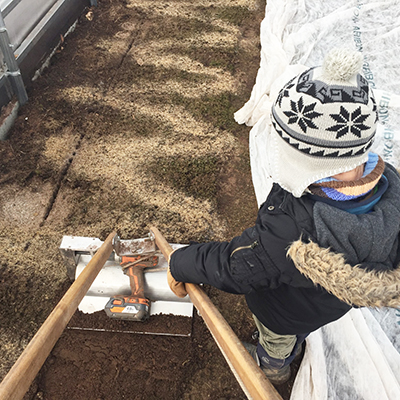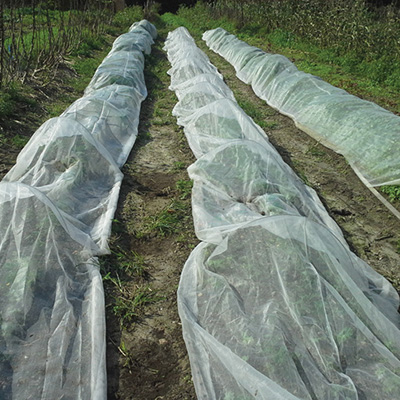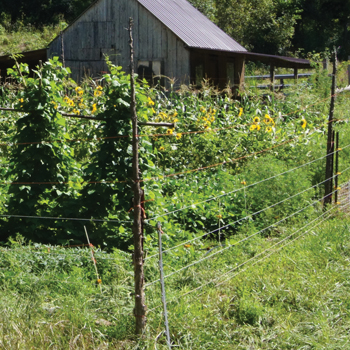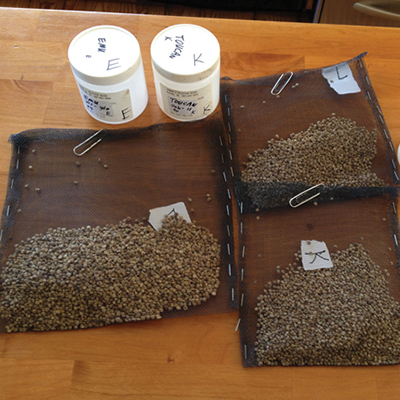Will the new certification appeal to local growers?
By Kai Hoffman-Krull
Soil is the greatest global carbon sink after the ocean. According to some reports, soil holds more carbon than our atmosphere and land biomass combined. The Rodale Institute has concluded with other partners that if all the world’s cropland and pastures were converted into regenerative organic systems, we could sequester more than 100% of current annual CO2 emissions.
The United Nations put out a report in August of this year that suggested similar findings and concluded that humans cannot reverse climate change without significant changes to agriculture and forestry. They cited topsoil as being lost at catastrophic rates, with erosion from conventionally tilled agricultural fields estimated to be more than 100 times faster than the soil formation rate.
In addition, agriculture is responsible for an estimated 21-37% of total net human-caused greenhouse gas emissions. What an industry to be a part of, the problem and a potential solution. It seems that getting dirty is how we might clean up our world.
Regenerative agriculture
Regenerative agriculture is a term we are all likely familiar with, which describes farming and grazing practices that rebuild soil organic matter and sequester carbon. Of course, they’re not new practices. A farming mentor, who was part of the 20th farm in Washington State to be certified organic, told me that all of the practices of the original organic food movement centered around the carbon cycle.
Composting, rotational grazing, and cover cropping all increased the soil carbon cycle, increasing biological activity, water, and nutrient retention. With the development of a certification, the movement went a different direction to focus mainly on pesticide and herbicide use.
Certification
The Rodale Institute is looking to create a new certification that goes beyond organic and conventional labeling, called the Regenerative Organic Certification. The project has already gained support from nearly two dozen large organic food brands and retailers, with the initial launch of products with the certification in stores set for 2020. The certification looks to provide customers with the opportunity to purchase food and products grown with regenerative practices like no-till, cover cropping, green manures, plant-based mulches, biochar, rotational grazing, and no antibiotics or hormones.
Certification is designed to build upon other certifications such as Organic, Fair Trade, Global Animal Partnership and others, and works with producers to fill in the remaining cultivation gaps to meet the requirements. The program offers three levels to provide a spectrum of quality to potential customers, bronze, silver, and gold.
In so many ways “local” has become the marketing angle for many small-scale farms that implies a series of conscious and sustainable practices, such as the ones listed above. “Local” has provided a premium market that avoids certifications.
Yet is local enough? Just because a farm is in a certain location or small does not mean they are doing carbon-based cultivation practices. Of course, every small farm does their growing a bit differently based on the land, the personality of the people, finances, and available equipment to name a few. Difference is good. But if all of these differences are classified under the same umbrella of “local,” customers do not know how their purchasing decisions influence the climate.
At a time in history when we need to be dramatically cutting into the 21-37% of total greenhouse gas emissions created by agriculture—as quickly as possible—we need to give people the choice. I’m not proposing an answer, or a certification process for small growers. I’m proposing that people talk to their customers about their regenerative practices.
Maybe that’s giving restaurants you sell to a list of how you’re working to store carbon in your soil, and how that can produce better food. Maybe it’s writing something up for your farmers market stand. It’s whatever you want. I just think we should be talking to people about how their local food is also regenerative. In a world often driven by futility, every person can try to do a little something to save our climate three times a day with each meal. Everyone can be a part of the solution because we all eat.
Entering the marketplace
“Regenerative agriculture is taking hold,” says Trudy Bialic, the Director of Public Affairs and Quality Standards at PCC Markets, one of the retail locations partnering to launch the Regenerative Organic Certification. “Climate change is on so many of our minds and the certification offers customers something they can do.”
Whereas carbon off-gassing from transportation has often been cited as a significant reason for the local food movement, Trudy said that distribution is only responsible for 11%-12% of agriculture’s greenhouse gas emissions. Production accounts for the vast majority of agriculture’s contributions to climate change, and altering production provides the greatest opportunity to reduce emissions.
Finding the best ways of measuring the influence of these practices offers a significant set of challenges to the certification, Bialic says. While she could not release information on how the program will analyze a farm’s regenerative capacity, she did say that the certification will likely involve ongoing soil testing to gauge the success of various practices on increasing soil carbon.
“It’s difficult to create standards when farming can look so different in different places.” Regardless of these challenges, Bialic sees regenerative agriculture as taking a major advance into the marketplace over the coming 7-10 years, with fresh produce offering the largest initial opportunity for the certification to be found in major food retail locations throughout the country and beyond.
Research on regeneration
Diana Martin, the Director of Communications at the Rodale Institute, works to promote the research conducted by the organization around the potential and need for regenerative practices. “At our current rate of production, we only have 60 years of farmable topsoil left according to the United Nations,” Diana says. “We need to make changes quickly.”


While a large number of farmers are already using regenerative practices, Diana says that customers do not know about them. She believes if the communication gap with customers can be breached, it will incentivize other farmers to adopt better growing practices. “We are more removed than ever before from food and farming,” she says. “But people understand the real challenges of climate change, and we can invite them into a solution.”
Diana sees the Regenerative Organic Certification as part of a larger movement into values-based purchasing. She cites a study illustrating Millennials are the largest buyers of organic food in the United States. “They are willing to pay more for what they believe in,” she says. But when a great deal of people are concerned about climate change and agriculture holds a part of the solution, the marketplace needs “more transparency” according to Diana.
While the program has a series of cultivation practices they call regenerative, the goal of the program is to invite new practices and not simply be prescriptive. Some of the practices currently identified as regenerative are cover cropping, composting, reduced tillage, crop rotations, and rotational grazing. The program will then involve regular soil testing to illustrate either the increase or maintenance of organic matter and soil carbon levels. This orientation accommodates additional practices not yet commonly known or practiced that may also sequester carbon.
The Rodale Institute has also published research on the influence of regenerative practices with food quality. One study, for example, found that reduced tillage increased nutrient concentrations in winter squash. The study found the use of both low and high input no-till roller-crimper technologies enhanced concentrations of α-carotene, lutein, calcium, and phosphorus in winter squash when stored for 60 days.
The Rodale Institute has also published research illustrating that we do not only need regenerative agriculture to alter the trajectory of climate change, but also for crop resiliency as our climate changes. Their research suggests that regenerative practices increased crop productivity by 40% in times of inclement weather such as flooding and drought in comparison to conventional systems. “We really need to be talking about resilient agriculture when we speak about regenerative agriculture,” says Diana.
What it means for small growers
An understanding of the role of agriculture in climate change, both as a problem and solution, is now making its way into the mainstream consciousness, not just residing with farmers anymore. There is talk of increasing funds for research and development and conservation funding to support farmers in storing carbon in our soil and not the air. Agriculture and forestry are becoming recognized nationally and internationally as a major tool not simply for minimizing carbon emissions, but for sequestering it.
Still I am struck by how many of the remedies presented to climate change are technological, not land based. Do we think the solution must be human created because we created the problem? Would it not be a twist of irony and humility if we came as a culture to believe that investing in earth was how we might save the Earth.
There is a beginning movement for larger-scale farms to communicate regenerative growing practices to their customers, and for good reasons. Agriculture is going to need to be a part of the larger solutions around climate change. And local agriculture has a role to play in inviting people into being conscientious. Agriculture can help us store carbon in our soil. Who better to invite people into agriculture’s climate potential than their farmer?
Kai Hoffman-Krull is the executive director of Forage, an ecology journalism nonprofit, focusing on studies and projects around plant resiliency in a changing climate. He runs a research market garden on his homestead in the San Juan Islands of Washington State, where he examines the efficiency and economics of carbon-based cultivation practices.


 If you’ve been a subscriber to Growing For Market (or even if you haven’t), you’re probably familiar with the many advantages of no-till agriculture. No-till methods can reduce a farm’s carbon footprint, promote complex soil biology, and preserve and build organic matter.
If you’ve been a subscriber to Growing For Market (or even if you haven’t), you’re probably familiar with the many advantages of no-till agriculture. No-till methods can reduce a farm’s carbon footprint, promote complex soil biology, and preserve and build organic matter.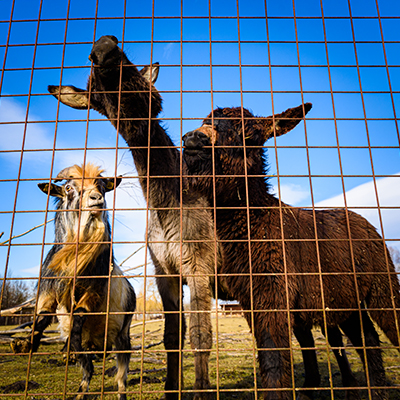
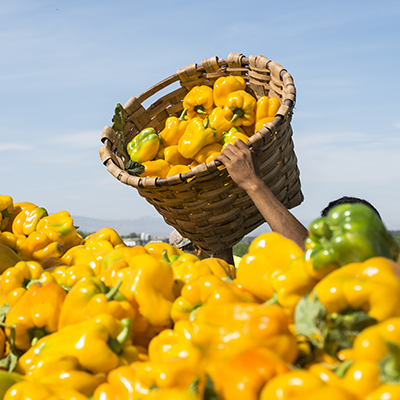
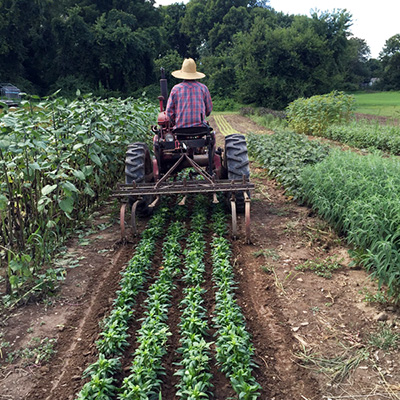

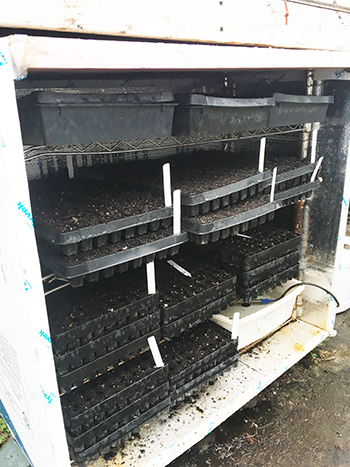 Until two years ago I was germinating all seedlings in greenhouses using almost exclusively bottom heat from electric heat mats. At my current farm we only had space for about 8-10 trays on our two mats and we definitely noticed differences in the germination (and presumably the heat the mats were providing) on the edges of our trays.
Until two years ago I was germinating all seedlings in greenhouses using almost exclusively bottom heat from electric heat mats. At my current farm we only had space for about 8-10 trays on our two mats and we definitely noticed differences in the germination (and presumably the heat the mats were providing) on the edges of our trays.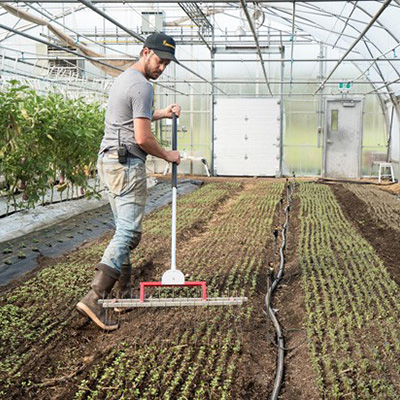
 Over the last three years, I’ve been involved with a new experimental farm in my province of Quebec. At my farm, La Ferme de Quatre Temps, I was asked to design and create a training farm where some of the strategies described in my book
Over the last three years, I’ve been involved with a new experimental farm in my province of Quebec. At my farm, La Ferme de Quatre Temps, I was asked to design and create a training farm where some of the strategies described in my book 
